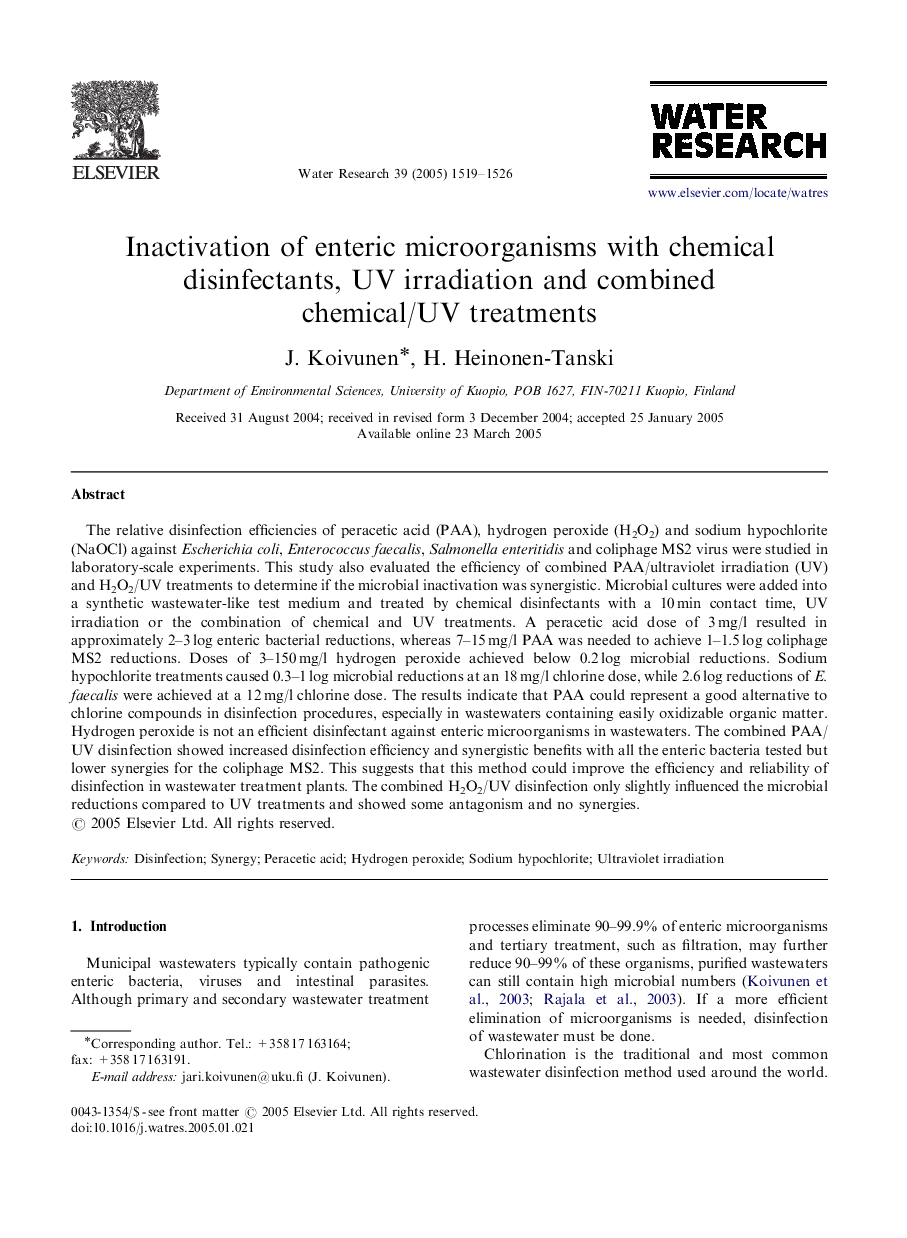| Article ID | Journal | Published Year | Pages | File Type |
|---|---|---|---|---|
| 9468200 | Water Research | 2005 | 8 Pages |
Abstract
The relative disinfection efficiencies of peracetic acid (PAA), hydrogen peroxide (H2O2) and sodium hypochlorite (NaOCl) against Escherichia coli, Enterococcus faecalis, Salmonella enteritidis and coliphage MS2 virus were studied in laboratory-scale experiments. This study also evaluated the efficiency of combined PAA/ultraviolet irradiation (UV) and H2O2/UV treatments to determine if the microbial inactivation was synergistic. Microbial cultures were added into a synthetic wastewater-like test medium and treated by chemical disinfectants with a 10Â min contact time, UV irradiation or the combination of chemical and UV treatments. A peracetic acid dose of 3Â mg/l resulted in approximately 2-3Â log enteric bacterial reductions, whereas 7-15Â mg/l PAA was needed to achieve 1-1.5Â log coliphage MS2 reductions. Doses of 3-150Â mg/l hydrogen peroxide achieved below 0.2Â log microbial reductions. Sodium hypochlorite treatments caused 0.3-1Â log microbial reductions at an 18Â mg/l chlorine dose, while 2.6Â log reductions of E. faecalis were achieved at a 12Â mg/l chlorine dose. The results indicate that PAA could represent a good alternative to chlorine compounds in disinfection procedures, especially in wastewaters containing easily oxidizable organic matter. Hydrogen peroxide is not an efficient disinfectant against enteric microorganisms in wastewaters. The combined PAA/UV disinfection showed increased disinfection efficiency and synergistic benefits with all the enteric bacteria tested but lower synergies for the coliphage MS2. This suggests that this method could improve the efficiency and reliability of disinfection in wastewater treatment plants. The combined H2O2/UV disinfection only slightly influenced the microbial reductions compared to UV treatments and showed some antagonism and no synergies.
Keywords
Related Topics
Physical Sciences and Engineering
Earth and Planetary Sciences
Earth-Surface Processes
Authors
J. Koivunen, H. Heinonen-Tanski,
